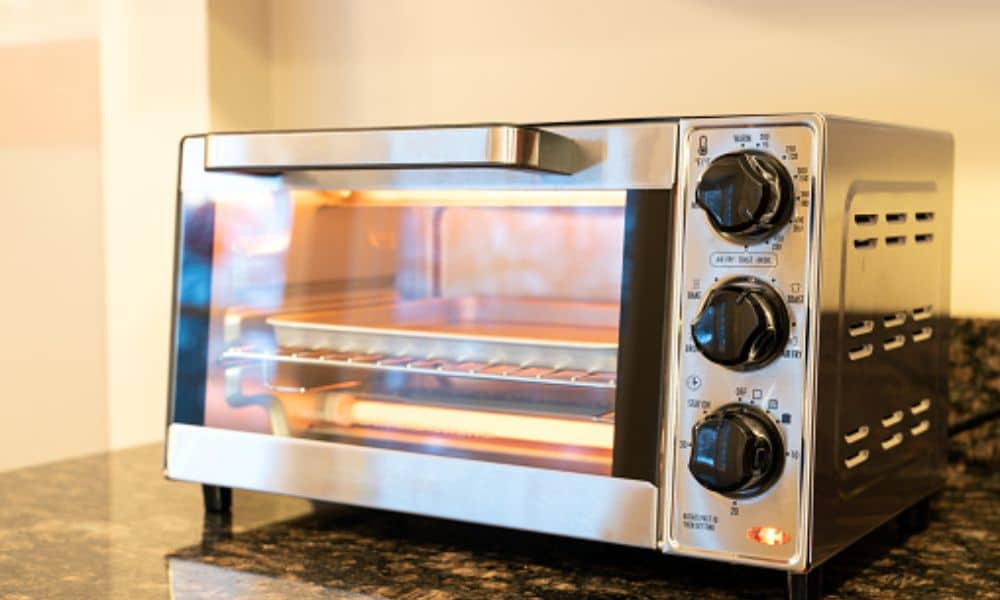I used to wonder—Are Toaster Ovens Toxic, or are we just overthinking it? After all, I was using mine daily, never questioning what those coatings were made of or what that weird smell meant when it heated up. Turns out, some toaster ovens can release harmful chemicals like PFAS or use Teflon coatings that break down at high heat. In this guide, I’ll break down what makes certain models unsafe and how to pick a non toxic toaster oven or a Teflon free toaster oven you can actually trust. If you’re like me and want safer, smarter kitchen choices, let’s explore what’s really heating up behind those tiny oven doors.
Understanding What Makes a Toaster Oven Toxic
Common Materials and Coatings Used
Not all toaster ovens are safe. Some use non-stick coatings like Teflon or PTFE. These can break down when the heat gets too high. That’s when they release harmful fumes.
Many ovens also contain PFAS. These are long-lasting chemicals. They don’t break down easily. Over time, they may harm your health.
Some ovens are made with cheap plastic parts. When these get hot, they can release bad smells. That smell is called off-gassing. It may mean harmful chemicals are in the air.
When Do Risks Actually Occur?
Toxins don’t come out right away. But if the oven gets too hot, that’s when it starts. Teflon breaks down at 500°F or more. Some toaster ovens and air fryers reach that heat.
New ovens often smell during the first use. That’s normal but not great. It’s from oils or coatings burning off. Run the oven empty a few times to let the fumes go away.
Also, think about what touches your food. Some parts are coated or plastic, but don’t touch food. Others do. When food touches unsafe parts, that’s a problem.
Non Toxic Toaster Oven Options
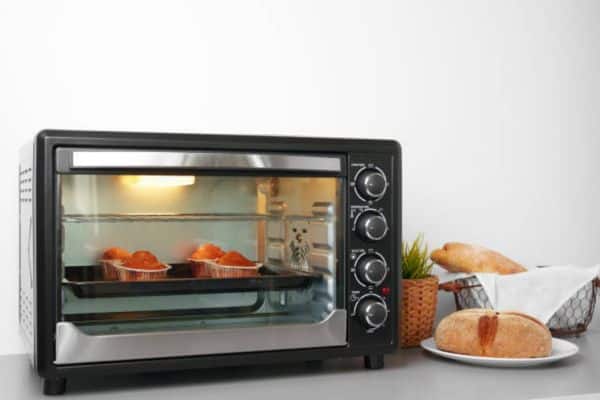
What “Non Toxic” Really Means in Kitchen Appliances
When we say a toaster oven is “non toxic,” we mean it’s made without harmful coatings or cheap plastics. One big thing to look for is a Teflon-free interior. That means there’s no PTFE or PFOA inside. These chemicals can break down at high heat.
Many safer ovens use stainless steel or ceramic instead of non-stick coating. These are strong, clean, and don’t release fumes. Plus, they last longer.
Also, check for BPA-free plastics. BPA is a chemical found in some older plastics. It can leach into food or air when heated. Newer ovens are often labeled BPA-free, which is a good sign.
Examples of Safer Designs
Instead of naming brands, let’s look at features you should search for. A good non toxic toaster oven will have a stainless steel body, a bare metal or ceramic cooking tray, and no weird smells when it heats up.
Check the labels when shopping. Look for terms like “PTFE-free,” “PFOA-free,” and “BPA-free.” These are green flags. Also, ovens that pass food-safe certifications (like FDA or RoHS) usually follow higher safety standards.
When I was switching to a safer model, I did a deep dive. My old oven had a weird odor and a peeling tray. I picked a small stainless steel oven with no coating inside. It’s easy to clean, doesn’t smell, and I feel better using it every day.
Are Air Fryer Toaster Ovens Safe?
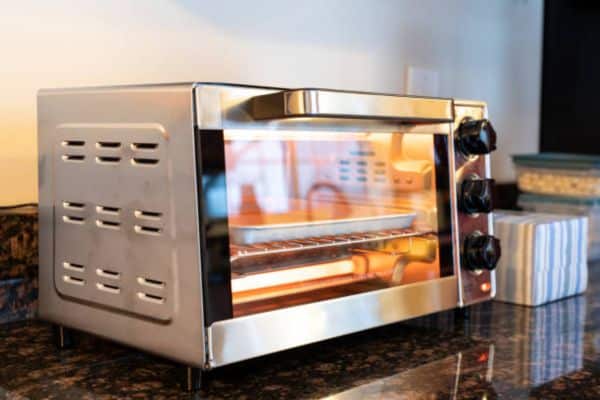
Non Toxic Air Fryer Toaster Oven Benefits
I love using my toaster oven with air fryer mode—it’s crisp, quick, and cuts down on oil. But I had to ask: are air fryer toaster ovens really safe?
The good news? Many of them are! These combo ovens let you get that crispy texture without deep frying. So, it’s better for your health and faster too.
But not all are created equal. The key is checking if it’s PFAS-free. Some models use non-stick coatings made with PFAS. If heated too much, those can release toxic fumes. So, look for one that clearly says “non toxic” or “PFAS free” on the box or in the specs.PFAS Free Air Fryer Toaster Oven Options
Here’s why PFAS-free matters: these chemicals stay in your body. They don’t go away easily. Over time, exposure might affect your liver, immune system, or hormones. That’s not worth the risk—especially from something you use daily.
So what should you look for instead? Go for ovens with stainless steel baskets or ceramic trays. These don’t need chemical coatings. They’re safe at high heat and super easy to clean.
You might wonder—what’s better: a standalone air fryer or a toaster oven with air fry mode? Honestly, the combo ovens save space and do more. I use mine for toast, pizza, fries, and even roasting veggies. Just make sure it’s labeled non toxic.
How to Tell If Your Toaster Oven is Safe to Use
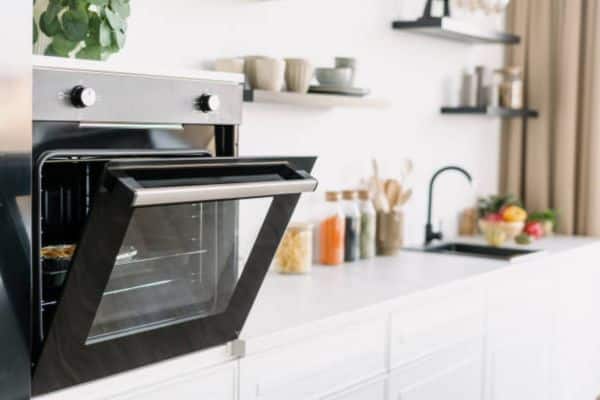
Simple Checks
Not sure if your toaster oven is safe? Don’t worry—there are a few easy ways to find out.
First, check the box or manual for labels like “BPA-free,” “PTFE-free,” or “PFOA-free.” These show the oven was made without harmful coatings or plastics. If a company lists these clearly, it usually means they’ve put thought into safety.
Next, do the smell test. Turn the oven on (empty) and let it run for 5–10 minutes. If it gives off a strong chemical or burnt plastic smell, that’s a red flag.
Also, take a moment to read the manufacturer’s details online. If they mention certifications or food-safe materials, that’s a good sign. If they’re vague or don’t share material info, that’s a warning.
Safe Usage Practice
Even a non toxic toaster oven needs to be used the right way. Heat, time, and wear can change how safe your appliance is.
Avoid overheating the oven, especially above 450°F unless it’s made for that. High temps break down coatings faster.
Also, never use trays or racks that are peeling or scratched. If you see flakes or feel a rough spot, it’s time to replace them.
Lastly, clean the oven often, especially the crumb tray. Built-up grease and food bits can burn, smoke, or break down coatings over time.
My Personal Experience with Non Toxic Toaster Ovens
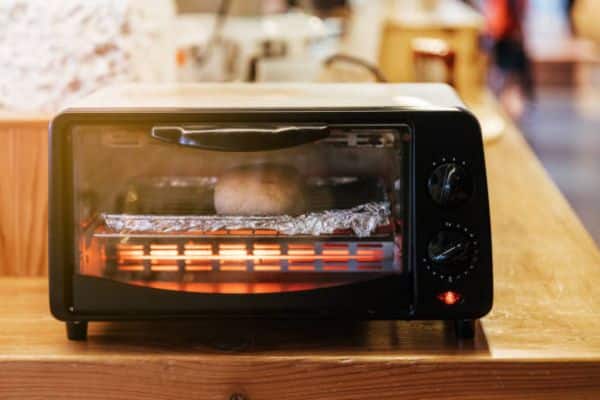
A few years ago, I had one of those basic cook toaster ovens with a slick non-stick tray. It worked fine—until one day, I noticed a weird chemical smell whenever I toasted something. At first, I thought it was just old crumbs burning, but it kept happening even after cleaning. That’s when I started reading about Teflon coatings and PFAS in kitchen appliances. Honestly, it spooked me.
After doing some research, I decided to switch to a stainless steel toaster oven with no coating inside. It didn’t have all the fancy buttons, but it felt safer. And surprisingly, the food tasted better—cleaner, without that odd aftertaste I hadn’t noticed before.
The biggest change? No more weird smells. Even on high heat, the oven stayed odor-free. It also lasted longer—no peeling, no stains, and way easier to clean.
FAQs
Are toaster ovens toxic to use daily?
Not all toaster ovens are toxic, but some can release fumes if they use Teflon or low-quality plastics. If your toaster oven is PFAS-free, BPA-free, and uncoated or stainless steel inside, it’s safe for daily use.
What is the safest non toxic toaster oven?
The safest options are Teflon-free toaster ovens with stainless steel or ceramic interiors and BPA-free plastics. Look for models that clearly say PTFE/PFOA-free and PFAS-free in the description.
Is a non toxic air fryer toaster oven better than a regular air fryer?
It depends on your needs. A non toxic air fryer toaster oven does more—it toasts, bakes, broils, and air fries. It’s a space-saver and safer if it’s PFAS-free.
How do I know if my toaster oven is PFAS free?
Look for product labels or manuals that say “PFAS-free,” “PTFE-free,” or “PFOA-free.” If it doesn’t mention these, it probably contains them. You can also check the brand’s website or contact customer support.
Conclusion
Not all toaster ovens are toxic—and that’s the good news. With a little awareness, it’s easy to find safe, non toxic options that won’t fill your kitchen with mystery fumes or harmful chemicals.
I made the switch myself, and honestly, I wish I had done it sooner. Choosing a PFAS-free, Teflon-free toaster oven gave me peace of mind—and better-tasting food, too. It’s a small change that made a big difference in how I cook every day.


